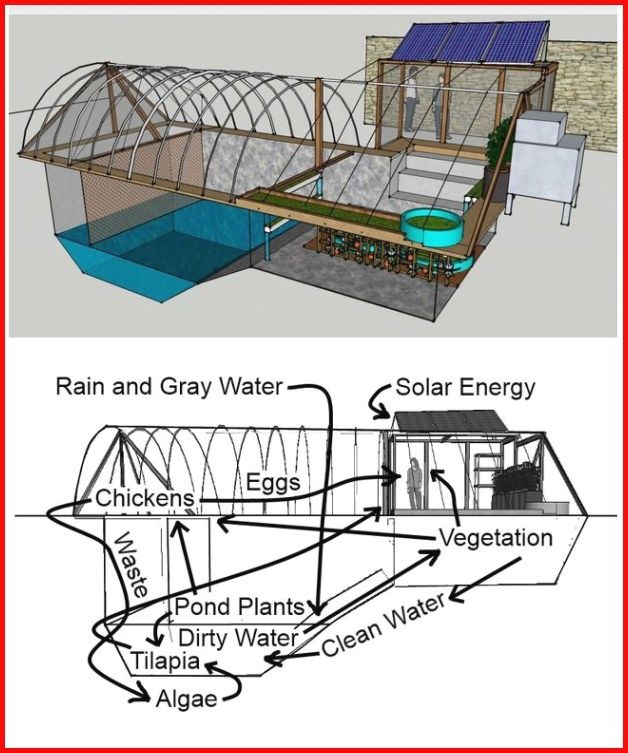A closed-loop design powered by solar energy and recycled water is redefining modern farming, turning waste into resources and homes into food-producing hubs.

This diagram beautifully explains a self-sustaining eco-system that integrates animals, plants, water, and renewable energy into one cycle. Let me break it down step by step, like a technician explaining the mechanics of a machine 🔧🌱🐟:
🔄 How the System Works
- Rain & Gray Water Collection
- Rainwater and household gray water (like from sinks or showers) are collected.
- This provides a continuous water supply for the system, reducing waste.
- Solar Energy ☀️
- Solar panels generate electricity.
- This powers pumps, lights, or any small equipment needed to keep the cycle running.
- Chickens 🐔
- Chickens provide eggs for food.
- Their waste (manure) is nutrient-rich and becomes input for pond plants and algae.
- Fish Pond (Tilapia) 🐟
- Chickens’ waste and organic matter enrich the pond.
- Tilapia feed on algae and organic debris.
- Fish produce ammonia-rich waste, which is broken down by bacteria into nutrients for plants.
- Pond Plants & Algae 🌿
- Plants and algae naturally filter dirty water.
- They absorb nutrients (nitrogen, phosphorus) and grow faster.
- Clean water is released back into the system for reuse.
- Vegetation (Garden Beds / Hydroponics) 🌱
- Plants use the nutrient-rich water from the fish pond.
- In return, they filter and purify the water before it goes back into circulation.
- Vegetables and fruits grow, providing fresh produce.
- Output Products 🥚🥬🐟
- Eggs from chickens.
- Fish (Tilapia) for protein.
- Vegetables & fruits for vitamins and fiber.
- All grown sustainably within one cycle.
🌍 Why This is Brilliant
- Zero Waste System: Every byproduct becomes input for another process.
- Food Security: Produces multiple food sources (fish, eggs, plants).
- Eco-Friendly: Uses solar energy and recycled water.
- Scalable: Can work in small backyards or larger farms.
✅ In short, this is a closed-loop eco-system where chickens, plants, fish, algae, rainwater, and solar power all interact to sustain life and produce food with minimal external input.